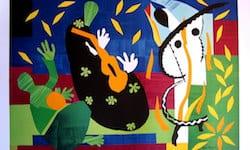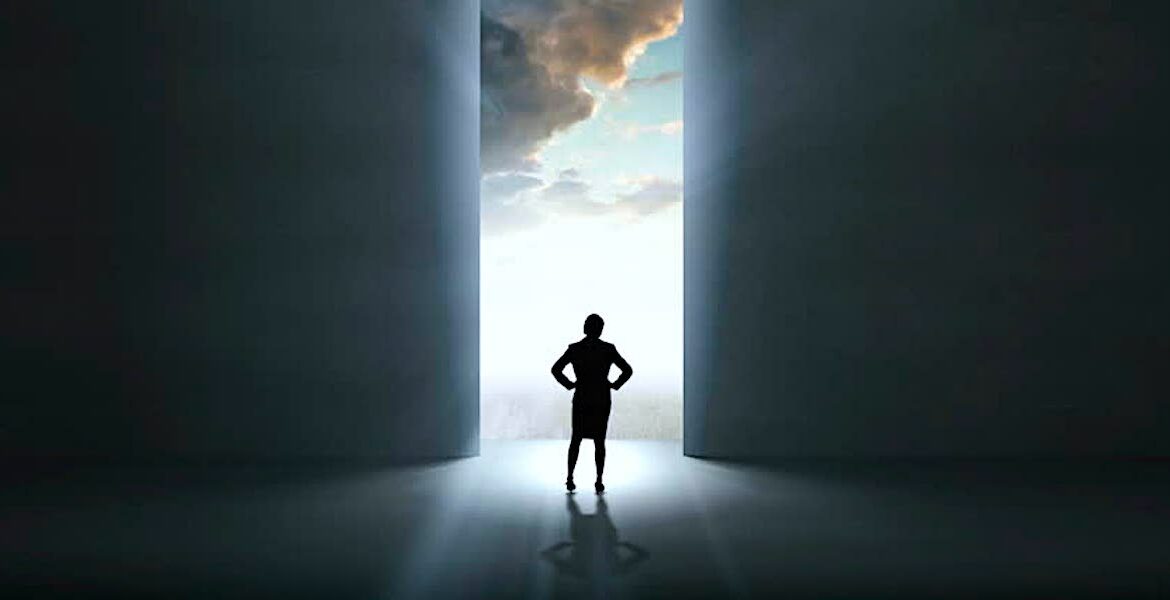Working through the darkness to come out into the light on the other side During the Q&A portion of a professional development session I led for approximately 100 elementary teachers and administrators this week, one of the teachers asked, “We are pouring ourselves out each day, giving and giving to the kids. What can we do to be filled?” Her sincerity and desperation reminded me of the dozens of conversations I have had with educators over the past four months for a National Science I-Corps project related to SEL. Time and again I hear, “We believe in social-emotional learning, but we must build capacity within our teachers first before they can teach it.” These questions and comments remind me of my own journey…
My first experiment with painting was in 1994 when I was working as a nanny. I played around with the paints that one of my kids had, and I remember feeling alive when I stroked the brush against the page. I remember being struck by the vibrance of the colors. I remember thinking that Jerry Garcia was both a singer and painter. I remember musing about the connection between music and visual art. I was moved by the paintings of Henri Matisse. My style was like his… or at least I wanted it to be if I ever had a style. Free-flowing. Abstract. Bright. Moving.
Then I abruptly stopped painting before I traveled anywhere in my soul. I felt inadequate because I was not trained as a painter. I felt frustrated because I didn’t have the supplies. More than that I was afraid; terrified of the journey into my soul. If I put on the page what I felt in my soul, I was sure to be rejected. Hidden inside was an ugliness that I couldn’t admit… shouldn’t admit. It was easier to be silent than to be honest.
 Through the years, I often heard the call of the paints, brushes, and canvases. I wanted to express myself, but I criticized my self-expression before it was even a pencil sketch. “You can’t paint that. You can’t think that. You can’t feel that. You can’t. You can’t. You can’t. Bad girl!” Part of the reason for the self-chastisement was my own religiousness — don’t talk about fear or pain, just smile and everything will be okay. The other part of the reason for my self-criticism was my desire to be perfect. If I let this darkness out of my soul, I would be telling the world that I wasn’t perfect; I would be acknowledging that there was a disconnect between my internal swirl and my placid appearance.
Through the years, I often heard the call of the paints, brushes, and canvases. I wanted to express myself, but I criticized my self-expression before it was even a pencil sketch. “You can’t paint that. You can’t think that. You can’t feel that. You can’t. You can’t. You can’t. Bad girl!” Part of the reason for the self-chastisement was my own religiousness — don’t talk about fear or pain, just smile and everything will be okay. The other part of the reason for my self-criticism was my desire to be perfect. If I let this darkness out of my soul, I would be telling the world that I wasn’t perfect; I would be acknowledging that there was a disconnect between my internal swirl and my placid appearance.
In 2007, I joined a women’s group that studied The Artist’s Way by Julia Cameron. It’s a dangerous book for people who are used to hiding. Cameron calls us out and challenges us to silence the critic and find our voice. My daily journaling focused on questions and issues rather than just serving as a written record of my daily activities. I began to take time each week to play and create. Although I didn’t speak at the meetings, I was drinking in the conversation. This experience was quenching the thirstiness of my soul. After many months, I started to paint.
Over the past ten years, the way I live life has changed. I now value process and create to release what is going on inside me. It’s healthy to work through the questions, the pain and the darkness in order to come out into the light on the other side. Giving myself this space has helped me be more gracious with others, both adults and children. It has also helped me be present in their times of doubt and sadness. What a relief to know that I don’t have to have all the answers.
According to Brackett, Palomera, Mojsa, Reyes, & Salovey (2010), teachers who recognize, understand, label, express, and regulate their own emotions are less likely to burn out. Why? They are dealing with their “stuff,” and when we deal with our stuff we create the capacity within ourselves to be patient, empathetic, communicative and safe for others. It’s like the announcement from the flight attendant before take-off, “If the cabin loses air pressure, be sure to put on your own oxygen mask first before helping those seated next to you.”
 I think one of the biggest obstacles as educators and parents is getting over the idea that taking care of ourselves is in some way selfish. It’s not. Giving our souls time and space to breathe helps us be better for our kids.
I think one of the biggest obstacles as educators and parents is getting over the idea that taking care of ourselves is in some way selfish. It’s not. Giving our souls time and space to breathe helps us be better for our kids.
Whether it’s painting, journaling, joining a small group, singing, exercising, camping, seeing a counselor, dancing, hiking… I encourage you to do what you need to do. Take good care.
Tips for Teaching Kids about Self-Awareness:
- Self-awareness is knowing your strengths and weaknesses; being able to know and understand how you feel.
- Ask kids, “How is your heart today?” – This may be a new concept for them. Encourage them to be still and listen to what is going on in their heads and in their hearts.
- Remind them, “It’s okay, not to be okay.” – Not every day will be sunshine and roses. It’s okay to feel sad, angry, scared, or lonely. We just don’t want to get stuck there.
- Provide opportunities for creative expression. – Journaling, drawing, coloring, and painting are simple ways for kids to make their feelings and thoughts more tangible.
- Engage in conversation. – Be willing to ask questions and do a lot of listening.
- Follow-up. – Check in after a few days to see how he/she is doing. That extra effort assures them that your connection was authentic.
Hear more from Tamara Fyke of Love In A Big World at the 2019 Future of Education Technology Conference in Orlando, Florida, January 27-30. Tamara will be a featured panelist for the analyst session, Insights for Supporting SEL with EdTech, January 29 at 2 p.m.
Further Reading
- edCircuit – Tamara Fyke Columns
- Education World – From Chaos to Coherence: Managing Stress While Teaching
- EducationDive – Personalized learning remains a hot topic, but what does the groundwork look like?


